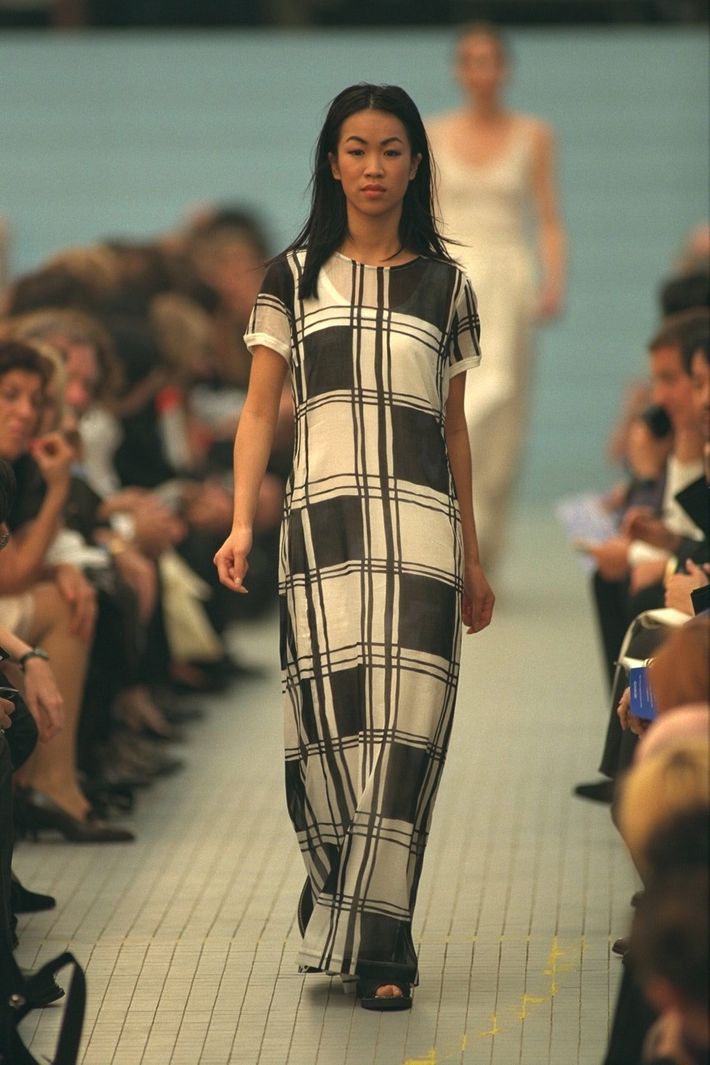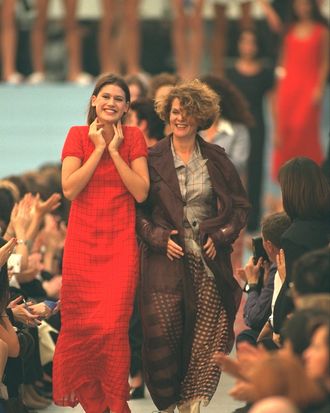
There’s a new theme every day on It’s Vintage. Read more articles on today’s topic: The Belgian Invasion.
Nowadays, casting a “real” woman in a campaign is one of the many moves in designers’ well-thumbed playbooks — and brands as vaunted as Marc Jacobs and Donna Karan have done so-called “real model” casting. In the mid-’90s, though, that tactic was uncommon. So it was legitimately startling when Dries Van Noten, for his spring 1996 collection, directed editors to a drained public pool — keep in mind, this was when most houses showed at the Grand Palais and the Louvre’s Cour Carrée — and proceeded to send 72 regular folks, none of whom had ever modeled before, down the “runway” — or rather, the floor of the pool. The eclectic group — who ran the gamut of ages and body types, and some of whom had long gray or white hair — smiled broadly, laughed, walked hand in hand, and all in all seemed to have fun. Van Noten cast them via flyers (the pre-Instagram method of choice) at cafés, bars, and acting and dancing schools in London, Brussels, and Paris, and narrowed them down from an initial group of 1,000. A staffer explained what they were looking for: “No model manners. No chi-chi. Model attitudes are not wanted. Be fresh, be you. If you look like a model, if you think like a model, if you are a model, you’re not wanted.”
Given that it was 1995, Waterworld jokes abounded in the accompanying press. Wrote the L.A. Times’ correspondent Mimi Avins, “The normally grumpy fashion press seemed to enjoy entering through the men’s locker room, passing by fit male swimmers wearing damp Speedos, then being ushered to their seats by friendly lifeguards in tank tops and shorts.” As for the clothes, she added that they were “just ugly enough to feel very hip, but good-looking tailored jackets emerged too, amid the sheer layers and shiny fabrics.” Writing in the Washington Post, Robin Givhan had this to say: “Tall and skinny, short and trim, muscular, plump or stout, the models represented the variations in the female shape. Any woman can wear Van Noten’s clothes and, most importantly, any woman can look wonderful in them. She may not — probably won’t — wear Van Noten to the office, but she could easily wear these clothes to dinner or a play.” The Globe and Mail hailed the collection as “a triumph of ordinariness” and “friendly to a variety of body types.”
Later, the designer gave an interview to New York Times fashion critic Amy Spindler, giving more insight into why he cast the individuals he did. “There was an American girl, with a little round belly, who wore a red dress, and she was so beautiful in that dress. A model would never have looked that nice, because it was her shining energy that made it beautiful,” he recalled. “Designers show one type of woman and say this is the ideal. I never did that. People looking for the traditional idea of fashion, the ideal, will look at the runway photos and say, ‘What does Dries Van Noten’s ideal woman look like?’ And I have to say, She’s 16 years old to 65, 1 meter 58 to 1 meter 80 in height, and from size 34 up until size 46.’ I think my image for the moment is that we don’t have a real image of one type of woman. And maybe that’s a strong point.”
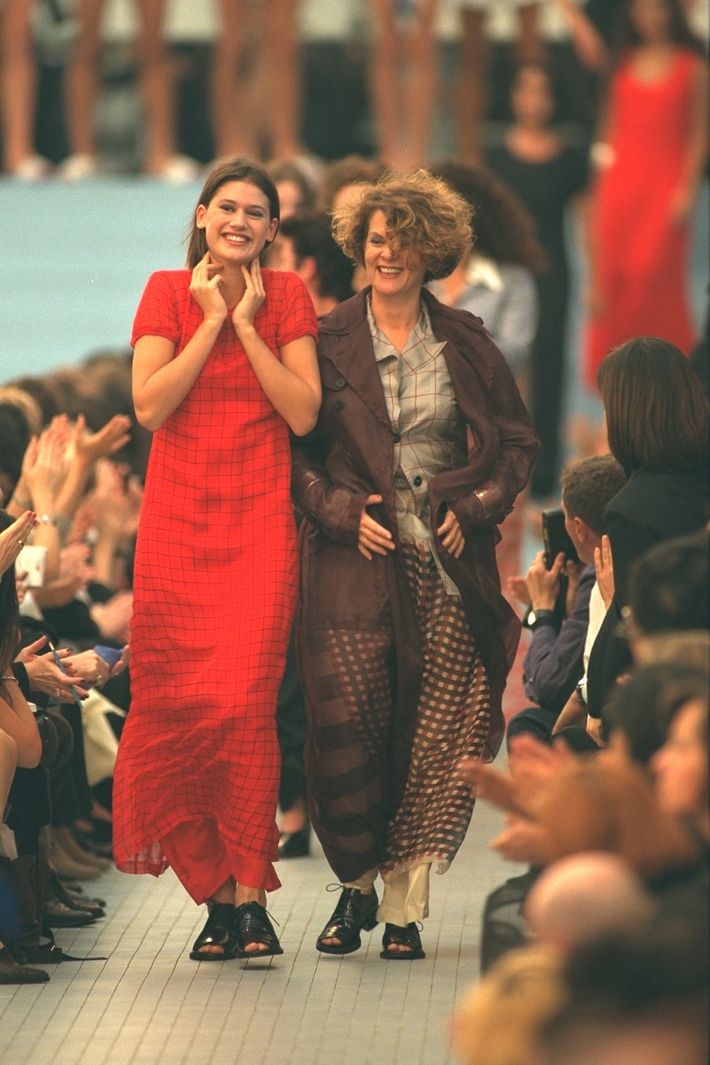
Dries Van Noten’s Spring 1996 ‘Real Women’ Show
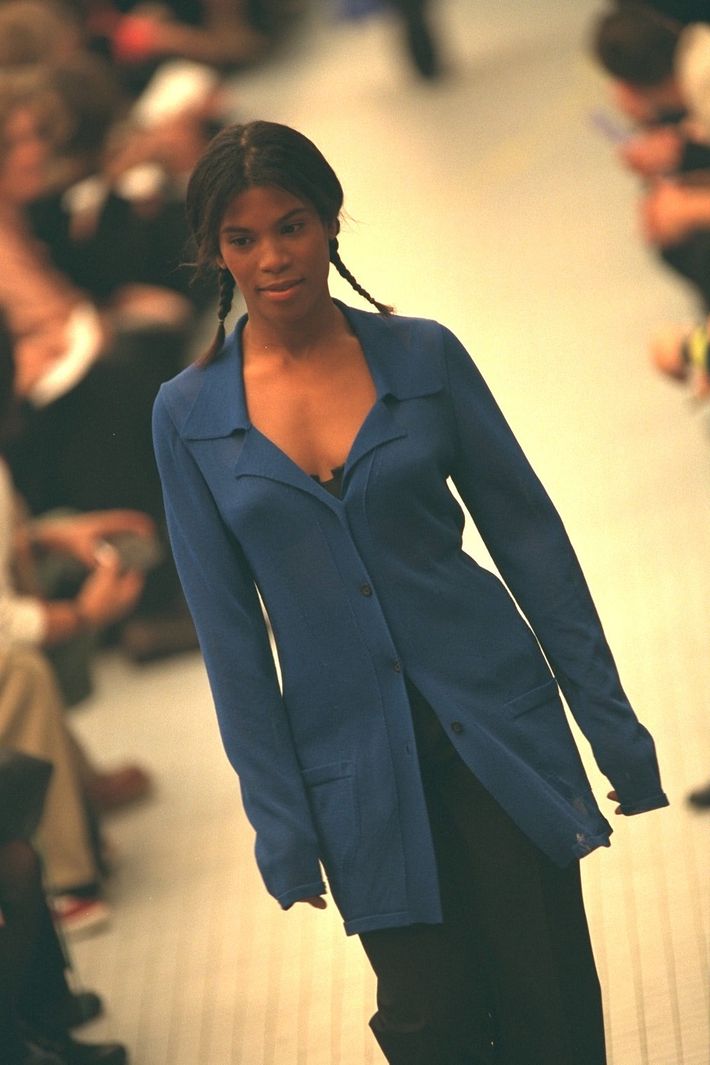
Dries Van Noten’s Spring 1996 ‘Real Women’ Show
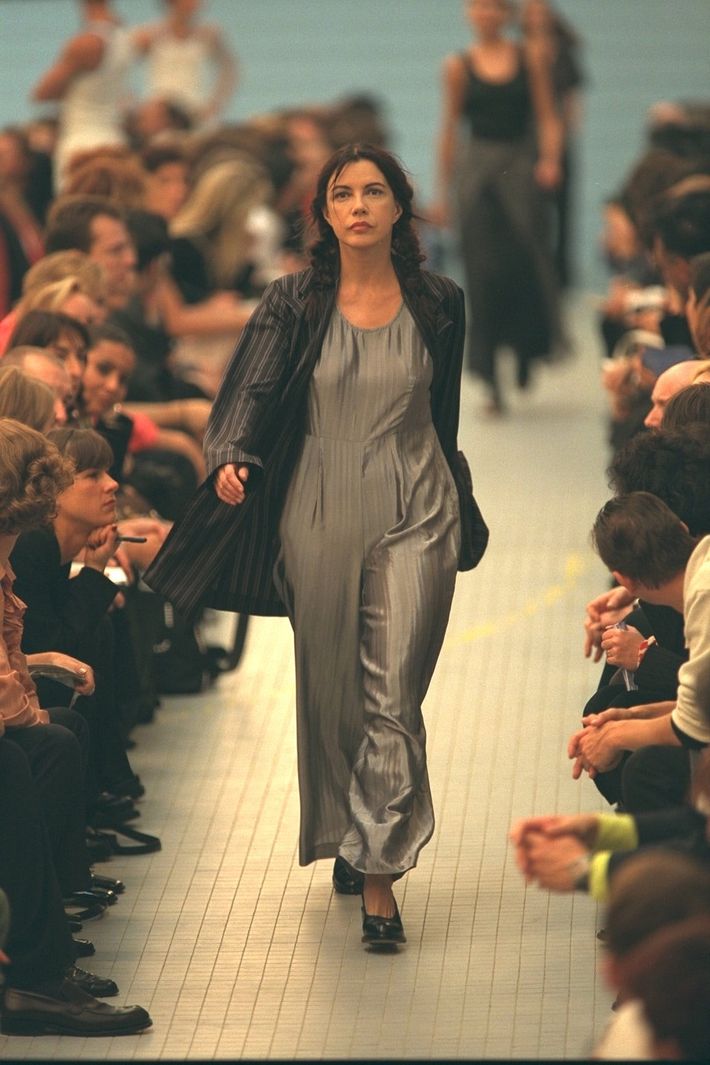
Dries Van Noten’s Spring 1996 ‘Real Women’ Show
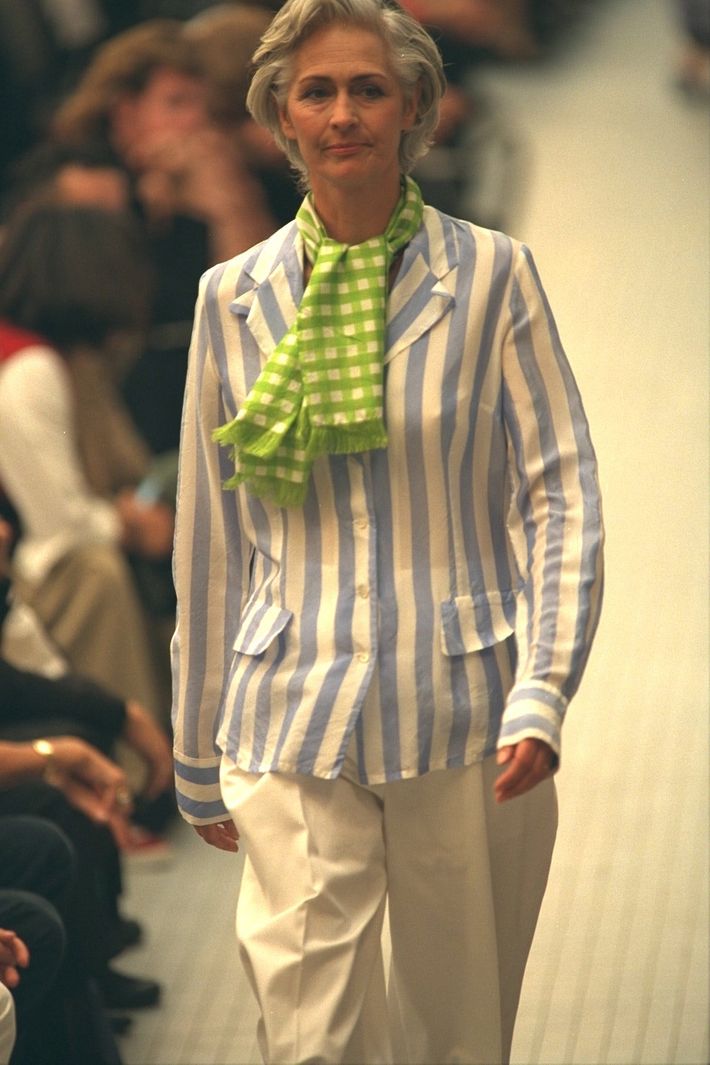
Dries Van Noten’s Spring 1996 ‘Real Women’ Show
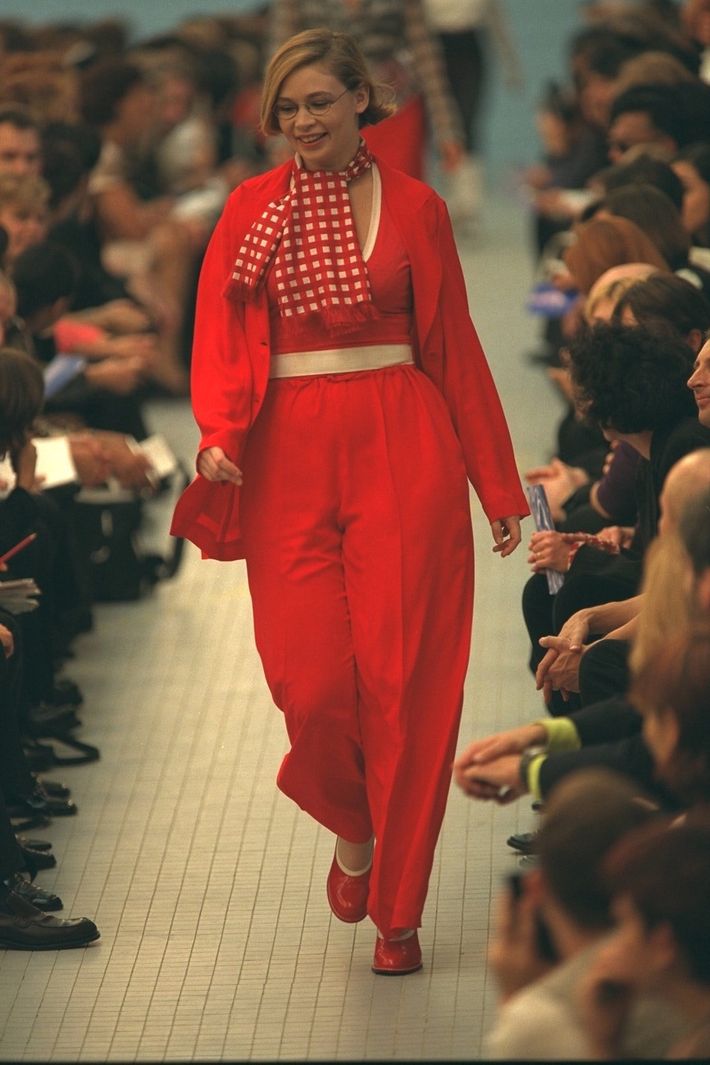
Dries Van Noten’s Spring 1996 ‘Real Women’ Show
